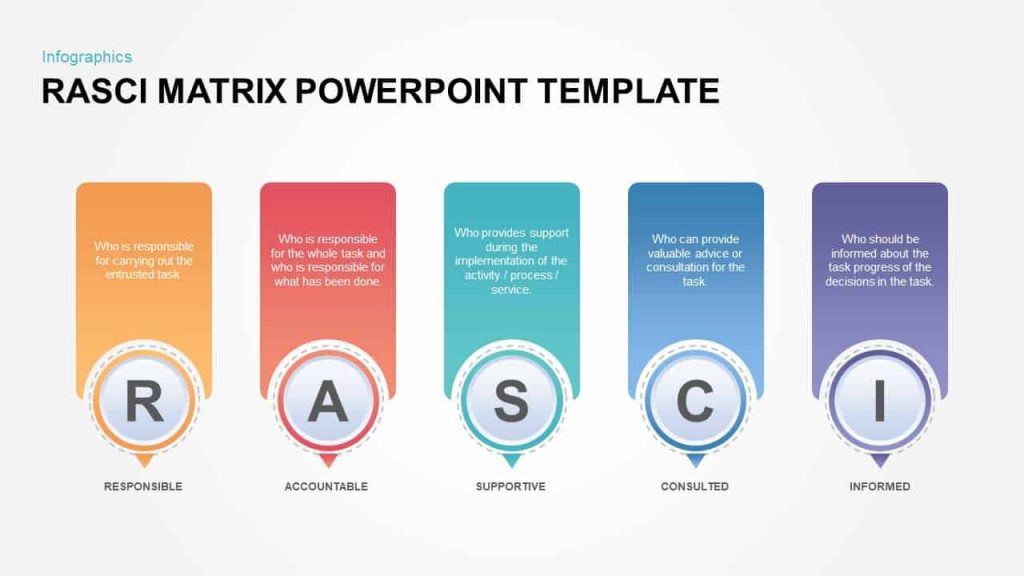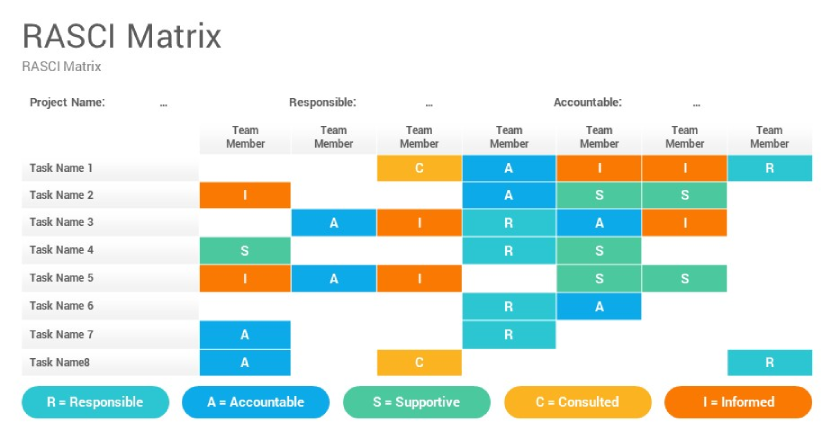The RASCI process improvement model consists of a matrix that represents the roles and responsibilities for every project. The RASCI method is known for easily creating clarity in the structuring of authority and responsibilities throughout an organization.
The principle of the RASCI method is that every employee within an organization has certain roles, tasks and responsibilities in a process that must be performed. One employee can be responsible for the execution of a certain process and another employee must be kept informed of this. However, with RASCI you ensure that these roles are clearly indicated and structured so that everyone always knows what their tasks are and can perform and control them successfully.

R – Responsible
The person directly responsible for the correct and timely performance of the task or the person who carries out the activity himself. This is accountable to the person who is accountable.
A – Accountable
The person who is ultimately responsible (authorised) for the correct execution of the task and who approves the end result. When it comes down to it, this person should be able to make the final judgment, have veto power. This functionary is entirely dependent on the success with which R carries out the activity. Especially because A is often ultimately responsible for the entire process, as process owner. In many cases, A is someone higher in the hierarchy than R, but that is not necessarily so.
S – Supportive
The person who provides support for the performance of the task or performs the task. S is a supporting role that R can call upon. Can only provide support upon request of R. This person is an expert in his field. S is responsible for the quality and outcome of its support but is not directly responsible for the activity itself.
C – Consulted
The person who must be consulted beforehand or must provide approval or input to an activity in the process. This person can therefore still influence the result.
I – Informed
The person who must be informed afterwards about the decisions, about the progress or the results achieved. This person can therefore no longer influence the result.

· Every activity (process step) has at least an R. Therefore, first fill in this R for each activity. An activity without R does not exist.
· An R can really only be given one function per activity. With multiple R’s within one activity, no one is really responsible.
· An A can also only be assigned once per activity; Then also fill in the A after the R.
· When allocating the A’s, keep in mind that this does not necessarily have to be the higher function in the hierarchy of the R.
· Pay attention to the division of roles between the A and the R. These two roles are often confused.
· A function can have multiple roles (with the exception of the combination R and A);
· Ensure that there is clarity and agreement about the interpretation of the various roles;
Periodically evaluate the detailed RASCI with those involved and adjust it.
We advise you to take a critical look at your business processes on the basis of the above-mentioned RASCI-method or I can guide you in this if desired.






